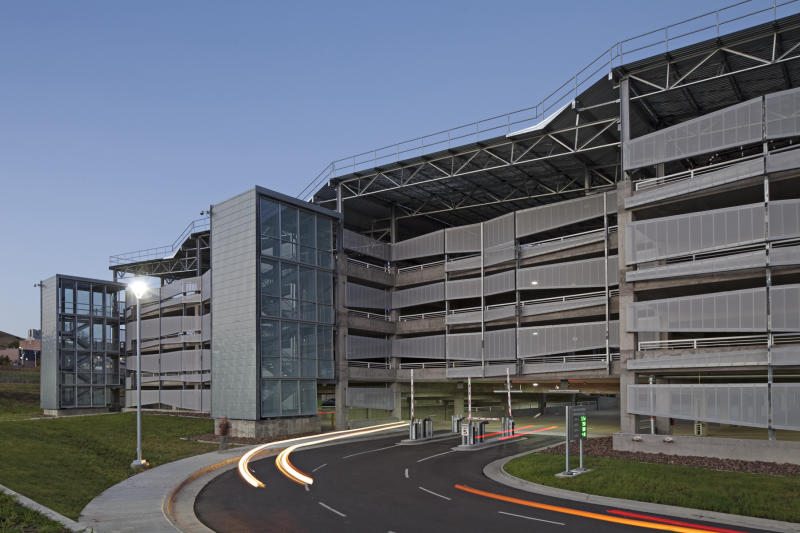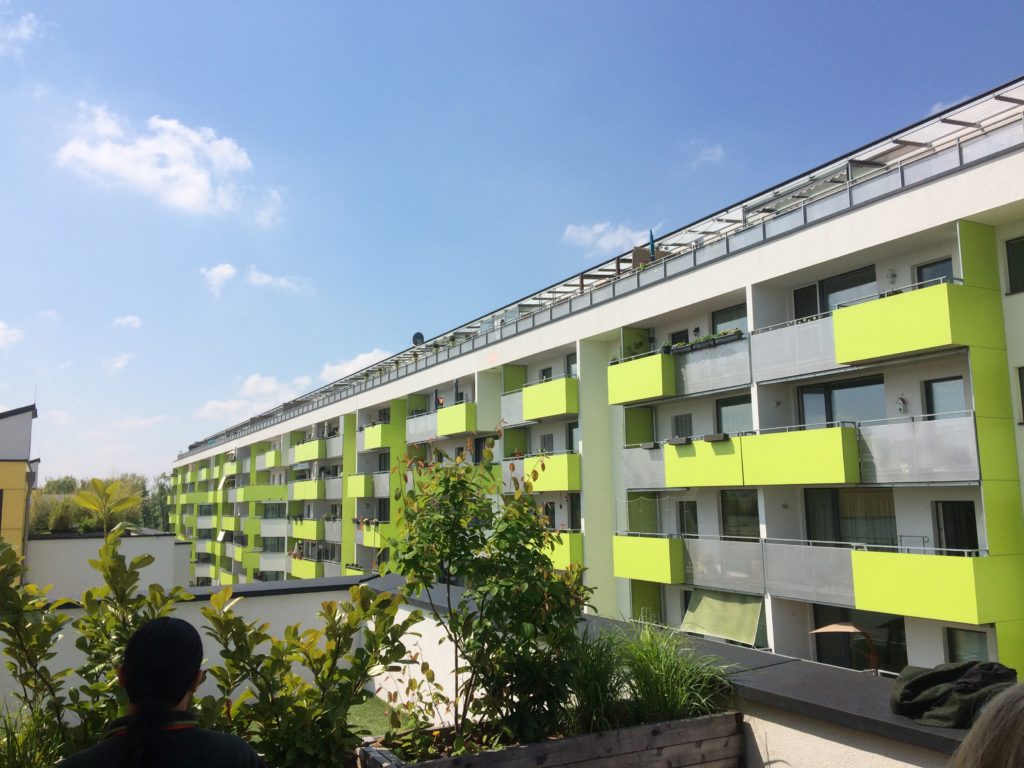What City Observatory did this week
1. How green is my free parking structure? Not very. The National Renewable Energy Lab does cutting edge research on wind, solar and renewable energy. One area where their thinking isn’t cutting edge: their new parking garage. Not only did the federal lab build an 1,800 space garage for its 1,500 employees, they all get to park for free. Free parking and the lab’s unwalkable suburban location lead about two-thirds of lab employees to drive alone. No matter how many solar panels you put on a garage, its just never going to be an environmentally friendly structure.

2. The secrets of Vienna’s housing affordability. Vienna is often held up as an example of how a city can provide affordable housing for all its residents. Guest commentator Mike Eliason reports on his study of the key policies behind the city’s housing Part I looks at the way the city (and the Austrian national government) fund housing. In short, social housing is much more generously funded than in the US. Part II, coming next week looks in more detail at the land use policies and development processes that underpin affordability.

Must read
1. The aspirational roots of black suburbanization. Writing at Corner Side Yard, Pete Saunders reviews some of the recent data on the suburbanization of the nation’s black population. In many metro areas, the African-American population in central cities is declining, while it is increasing in the surrounding suburbs. In the aggregate, in the 20 largest metro areas the White non-hispanic population is increasing in the principal (or center) city, and decreasing in the suburbs. For blacks, population is essentially flat in the center, and increasing in the suburbs. What’s behind these trends? Saunders is quick to dismiss the idea that it’s displacement from gentrification. Instead, he argues, the dominant factor is the aspiration of many black households for things the suburbs have always offered: “They will do so for the same reasons people before them did — affordability, good schools, lower crime. They are doing so in part because suburbia is something that eluded them for so long, and is now within their grasp.”
2. Corporate Headquarters: They don’t play in Peoria. Caterpillar is just the latest big corporation to announce its moving its corporate headquarters away from its suburban or small town location. The company will shift its headquarters from Peoria to Chicago. While the move mostly affects 300 or so senior staff, and not the company’s thousands of blue collar jobs, it is symbolic. Just two years ago, the company had told city government it would be expanding in Peoria. As with other companies moving to the big city, a chief factor seems to be to gain better access to talented workers.
3. Would a land tax help solve California’s housing affordability problems? In an op-ed in the Los Angeles Times, three UCLA scholars–Michael Lens, Paavo Monkkonen and Michalel Manville (none of them strangers to City Observatory readers)– step up to argue that a tax on land value (rather than on improvements) such as housing, stores or offices, would be the right way to help subsidize affordable housing (and incentivize additional housing supply). While its tempting to think that loading the cost of subsidies on developers (through so-called linkage fees) will somehow force developers or newcomers to foot the bill for affordable housing, the evidence is these policies (and others like inclusionary zoning) backfire, and discourage the construction of new housing, driving rents higher. Putting a tax on land value would discourage inefficient, low density uses, and make new housing more economical. For too long, California’s post-Proposition 13 tax system has created an inequitable system that reinforces a NIMBY-dynamic that exacerbates the state’s housing affordability problem. Absent a bold rethinking of the tax system, it will be extremely difficult to change that situation.
New ideas
Whither (or perhaps wither) the Corporate Campus? We’re big fans of the folks at SPUR, the Bay Area organization that study’s the region’s economy, housing and transportation systems. Their Alison Arieff is the lead author of a comprehensive report looking at the future prospects of the corporate campus. The new Steve Jobs-inspired, Norman Foster-designed chrome doughnut in Cupertino may turn out to the the apex of the suburban office. Arieff and her colleagues examine how corporate campuses are changing, and where they’re headed. Their report is a fact-filled description of the history of the suburban office campus, the recycling and re-use of space in Silicon Valley, and the challenge posed by the increasingly urban-centric nature of innovation. An accompanying op-ed in the New York Times synopsizes some of Arieff’s main points, but you’ll want to read the entire report.

